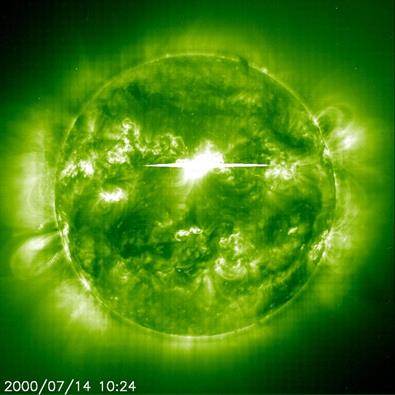NOAA 2665 continued to dominate the solar surface and was also responsible for the main event of the week, i.e. a long duration M2 flare associated with a halo coronal mass ejection on the French National Day.
NOAA 2665 has been transiting the solar disk over the last two weeks, attaining its maximum size on 9 and 10 July before its trailing section started a gradual decay. Hence, its outlook changed considerably before it rounded the west solar limb on 17 July. Underneath SDO/HMI imagery of NOAA 2665 on 9 and 12 July, as well as a clip covering 8 till 12 July.
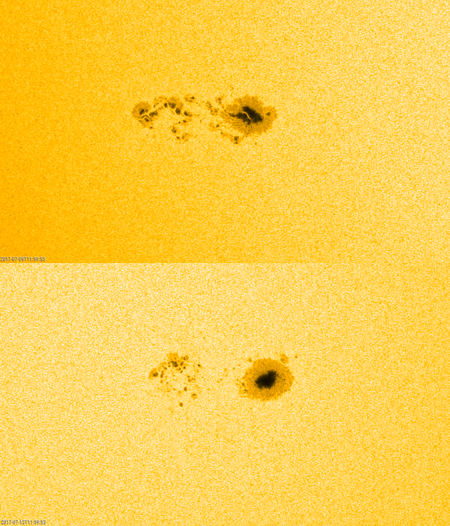

On 14 July, NOAA 2665 produced an M2.4 flare. It was a long duration event lasting no less than 2 hours and 17 minutes! The SDO images underneath show (on the left) the flare in extreme ultraviolet (EUV) of the AIA131 passband (multi-million degrees), whereas on the right it shows the event in the AIA193 passband at temperatures of about 1.3 million degrees). In particular the AIA193 images show the coronal dimming (indicative of the ejection of solar plasma) as well as some interaction with nearby NOAA 2666 very well.
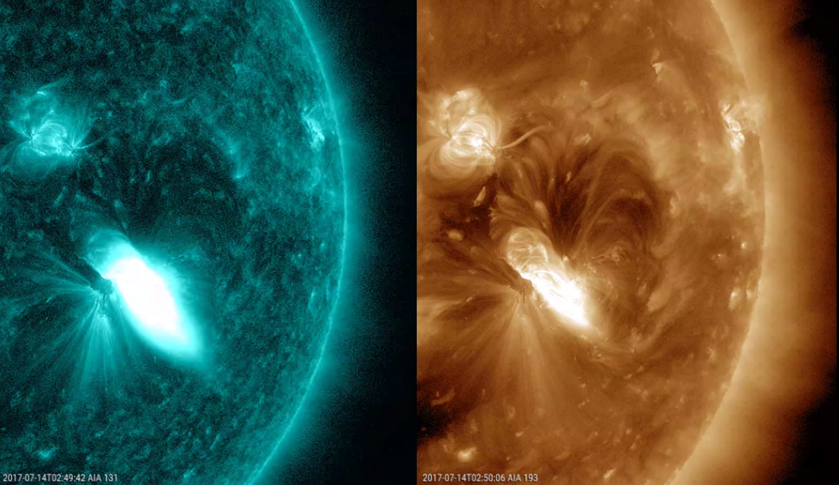
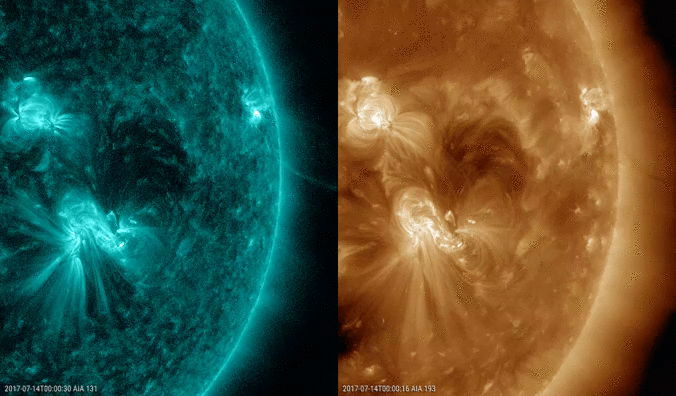
The M2 flare was also associated with a minor proton event, reaching 22 pfu (proton flux unit; see this STCE News item for more info) late on 14 July. It was the first proton event since 2 January 2016, which was of similar strength.
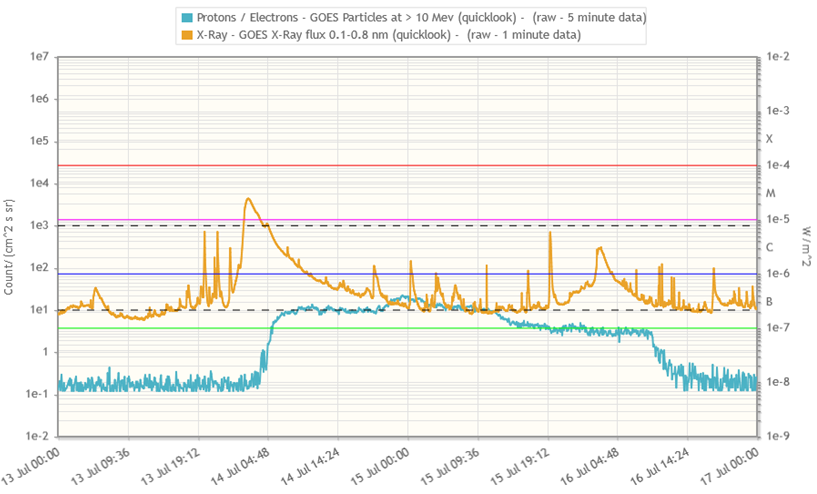
An asymmetric halo was observed by the SOHO/LASCO coronagraphs, and first seen at 01:36UT. The true speed of the CME was estimated to be around 1200 km/s. Also the coronagraph onboard the STEREO-A spacecraft recorded a full halo CME. As ST-A is currently about 45 degrees behind the solar east limb (as seen from Earth), and the flare's location was about 30 degrees west of the central meridian, the CME was on the solar backside as seen from ST-A.
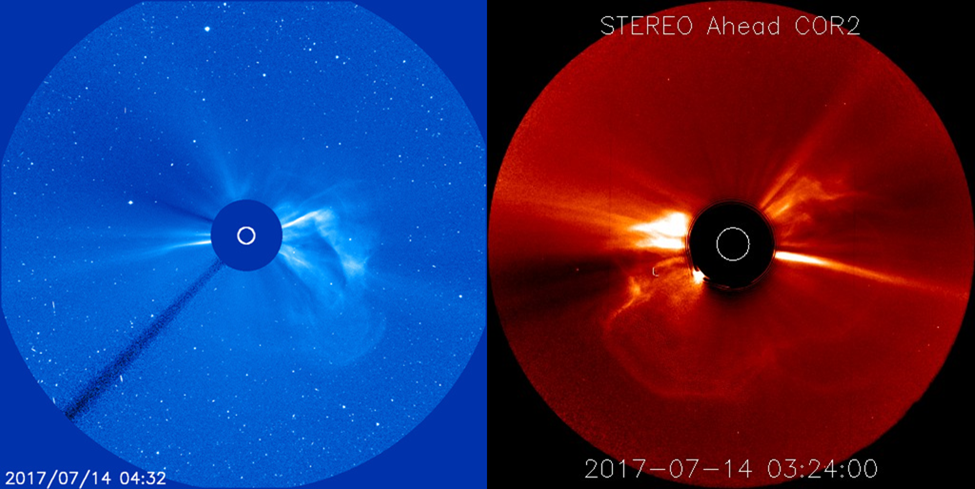
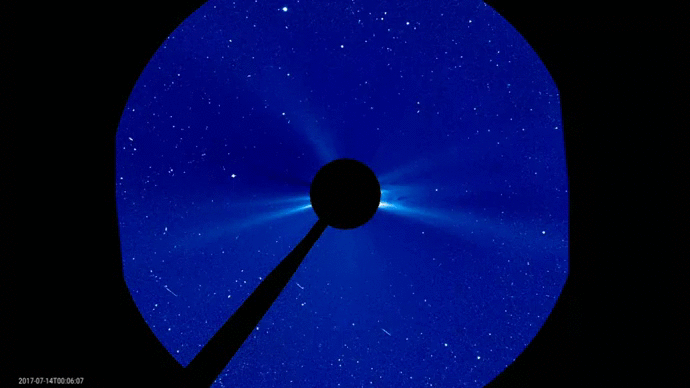
The name "Bastille Day 2017 event" is a wink to THE Bastille Day event back in 2000, when the CME associated with a strong X5 flare on 14 July (SOHO image underneath) caused an extremely severe geomagnetic storm late on 15 July. The International Space Station lost about 15 kilometers in altitude in just a few hours, and GPS inaccuracies doubled. Anno 2017, geomagnetic activity reached only moderate geomagnetic storming, with very limited technological impacts.
